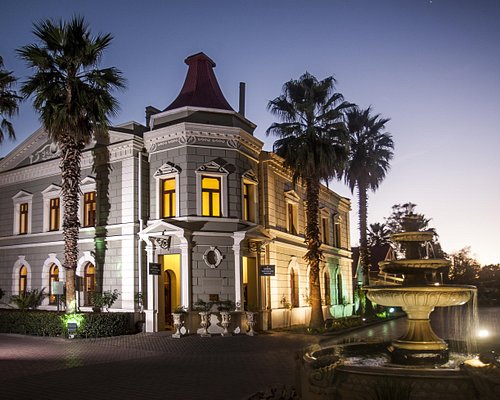The Facts About Johannesburg North Attractions Uncovered
The Facts About Johannesburg North Attractions Uncovered
Blog Article
Not known Facts About Johannesburg North Attractions
Table of ContentsThe smart Trick of Johannesburg North Attractions That Nobody is DiscussingGet This Report about Johannesburg North AttractionsFascination About Johannesburg North AttractionsThe Buzz on Johannesburg North AttractionsJohannesburg North Attractions Fundamentals ExplainedAn Unbiased View of Johannesburg North AttractionsSee This Report on Johannesburg North Attractions
You should maintain security in mind and visitors should continue to be alert at all times when in unknown surroundings. Talk to the residents when you remain in town to discover the location you are remaining in. Johannesburg North attractions. When on the street (this does not put on buying malls and various other safe and secure settings) best basic guidance is to try your best to look like a local and to prevent showing any form of wide range
Facts About Johannesburg North Attractions Revealed
Professor Revil Mason O. J. (Thomson, 1946) checked out the Witwatersrand's pre-colonial history. His historical job exploded the 'em pty land' myth, according to which the region was lacking human habitation before the arrival of European inhabitants. In his magazines Prehistory of the Transvaal: A Record of Human Task (1962) and Beginnings of Black People of Johannesburg and the Southern Western Central Transvaal Advertisement 3501880 (1986 ), Teacher Mason demonstrated the level of social and economic advancement in the location prior to Europeans set foot here.

Johannesburg North Attractions - Truths
In 1878, David Wardrop located gold in quartz veins at Zwartkop, north of Krugersdorp. In 1881, Stephanus Minnaar came across gold on the farm Kromdraai, near the Cradle of Mankind.
In March 1886, an outcropping (soon to be called the Main Coral reef) was located, fairly fortuitously, on Gerhardus Oosthuizen's farm Langlaagte. Some state that the Lancastrian coal miner George Pedestrian discovered this reef. Another travelling English prospector, George Harrison (that had actually previously operated in Australian mines) obtained a prospecting permit in regard of Langlaagte in Might 1886.
He determined to go on in a mission for greener pastures, and disposed of his Langlaagte claim for the baronial sum of 10. Alas: below lay the richest goldfield ever found. The discovery of this rich auriferous coral reef provoked a gold rush that signalled completion of agrarian serenity in the southerly Transvaal.
It would certainly, within six years, end up being the biggest town in southerly Africa. Within a years, it would make the Z. A. R. till then an anarchical and insolvent little state the wealthiest nation in Africa. By the turn of the century, the Z. A. R. was to surpass Russia, Australia and the United States of America to come to be the globe's leading gold manufacturer, producing greater than a quarter of the world's gold.
All about Johannesburg North Attractions
It was referred to as Ferreira's Camp, named after Colonel Ignatius Ferreira. He was a Boer traveler upon whom the British authorities had bestowed the standing of Buddy of one of the most Distinguished Order of St Michael and St George (qualifying him to the post-nominal letters C. M. G.) in gratefulness for his role in the battle that had more tips here deposed the Pedi king Sekhukhune in 1879.
Two other camps were established: Meyer's Camp on the farm Doornfontein, and Paarl Camp. The latter was nicknamed Afrikander Camp; lots of people from the Cape Nest worked out there.

The Main Principles Of Johannesburg North Attractions
This name acquired money by word of mouth, such that the State Secretary affirmed the name to the Mining Commissioner on 9 October 1886. Stands in the village were auctioned on 8 December 1886. While some stands were cost 10, others were torn down for as little as sixpence.
2 years later, these erven were to change hands for as long as 750 each. The tented camps diminished as a dorp of corrugated iron buildings established and broadened north of the mines located along the Key Reef Roadway. Areas such as Jeppe's Community (where working-class immigrants erected their homes) and Doornfontein (where the affluent brand-new 'Randlords' began to build their opulent houses) were soon contributed to the ever-expanding map of the town.
The Definitive Guide for Johannesburg North Attractions
Apart from the road names, there were no indications of Johannesburg being situated in a Dutch-speaking nation., almost everyone talked English and also the Federal government slaves addressed one in English, unless they were very first dealt with in the Taal (or Low Dutch)'.
Britain had a rate of interest in making sure ideal conditions for gold production on the Witwatersrand, and that the gold was exported to London instead than Berlin an imperative rendered all the extra clamant by the Z. A. R.'s boosting toenadering with Germany. Mine owners were on a clash with Head of state see this here Kruger, whose policy of monopolistic concessions (typically given to his cronies) avoided mining business from obtaining materials of materials (specifically dynamite) and work by themselves, less expensive terms
Not known Incorrect Statements About Johannesburg North Attractions
In 1890, the Volksraad had limited the franchise click to investigate to white guys that had actually stayed in the Z. A. R. for fourteen years or longer, thus invalidating a lot of the immigrants (that happened to be the major factors to the fiscus). However, frustration for the vote was a mere pretext for advertising a different schedule; a lot of uitlanders concerned themselves as short-lived visitors and had no purpose of continuing to be in the Z.
Report this page